How to Draw Hands
How to Draw Hands
Anatomy Lesson 11 – Part 1
In this video lesson, you will find out how to draw hands.
How to Draw Hands for Figurative Artists
When considering how to draw hands, you need to know the hand anatomy.
The bones in the forearm are called the ulna and the radius.
At the wrist joint, the radius is wider than the ulna.
The wrist bones are called the carpal bones. There are eight of them. This name comes from the Greek word karpos, which means wrist.
Carpal bones are positioned in two rows. As an artist, you don’t need to learn the name of each carpal bone.
The proximal row of the carpal bones – the row closer to the forearm – and note that it has a semi-circular shape. This shape helps in the movement of the joint between the wrist and the bones of the forearm.
The palm area of the hand is formed by the metacarpal bones.
The geometry of the bones of the hand follows the rules of the Golden Ratio. According to the Golden Ratio, the first phalange of the finger is shorter than the metacarpal bone.
The second phalange of the finger is shorter than the first one. This proportion also follows the Golden Ratio.
And finally, the third phalange of the finger is shorter than the second one, according to the same ratio.
The middle finger is the longest finger of the hand. You can see that the length of the metacarpal bone of this finger coincides with the halfway point of the hand length.
The same Golden Ratio proportion applies to the bones of the middle finger.


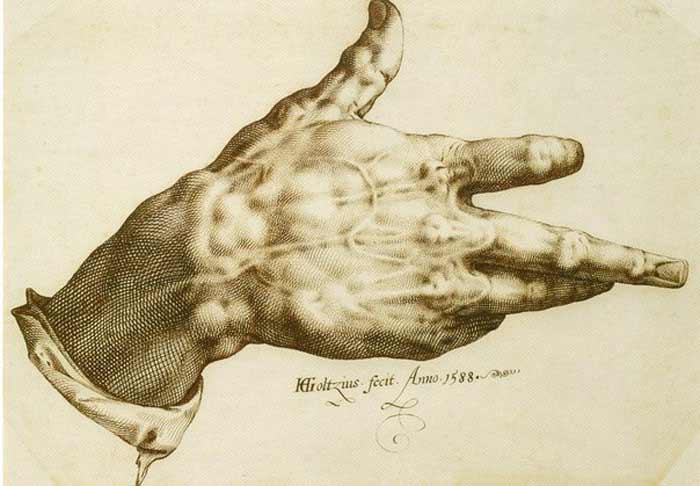
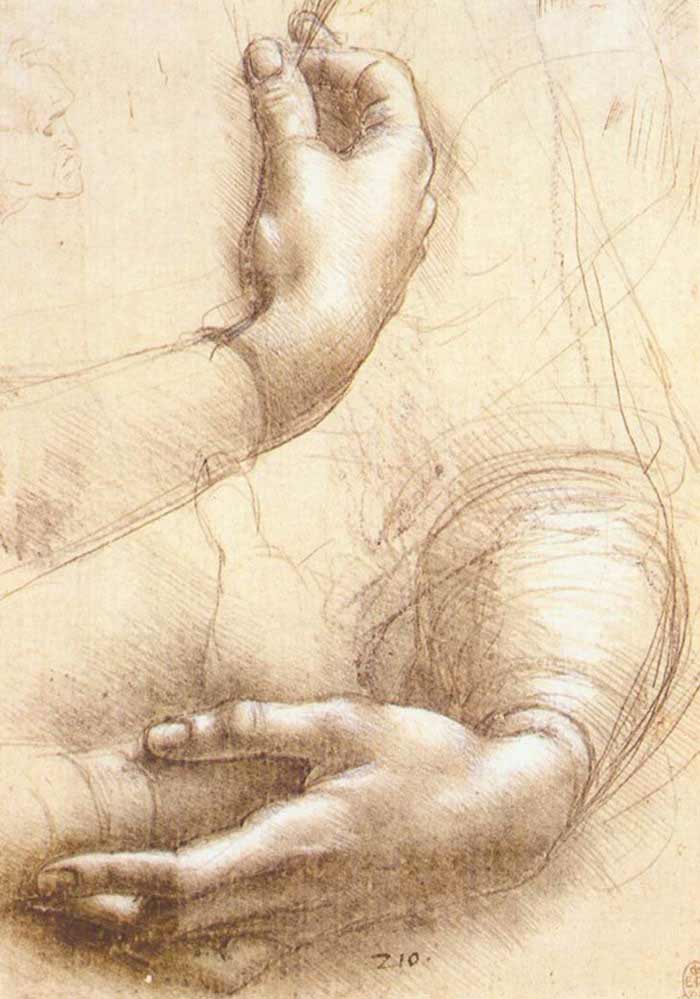
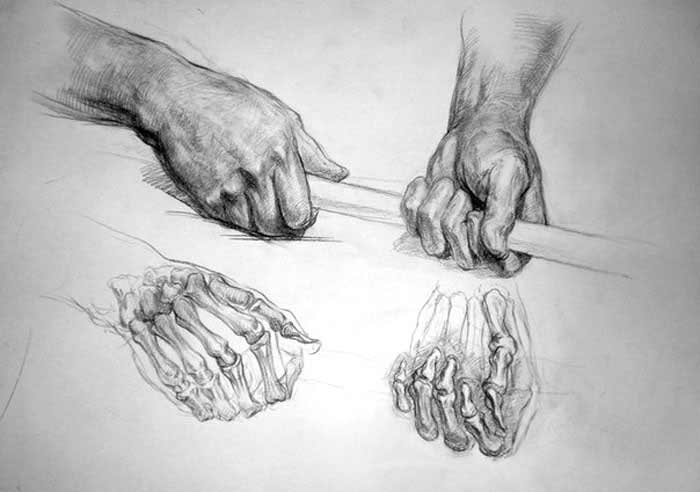
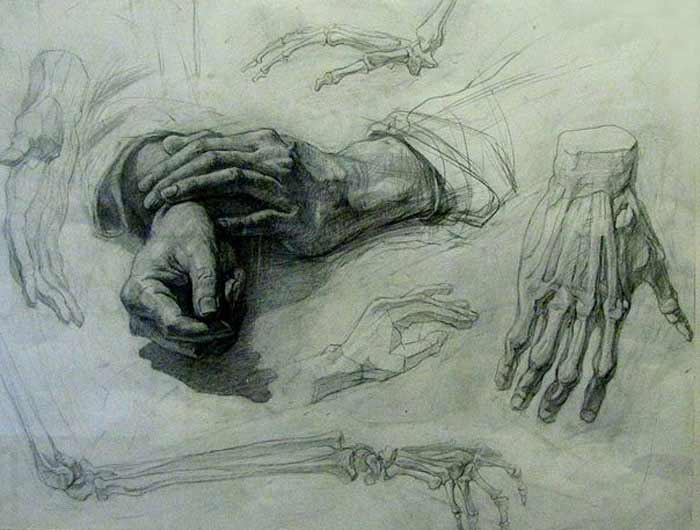
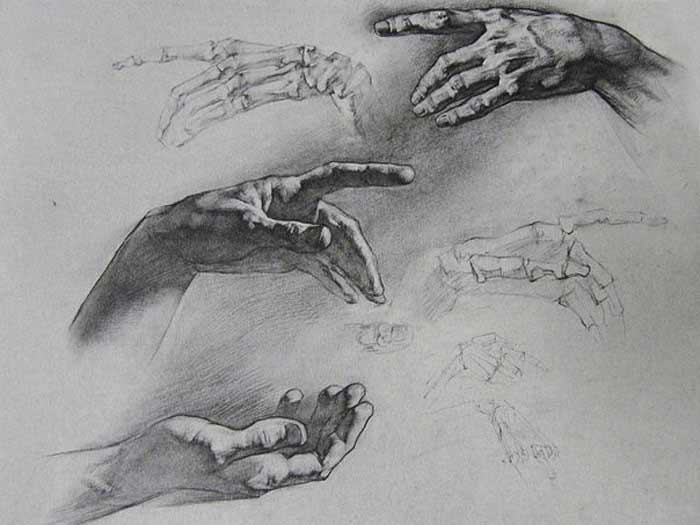
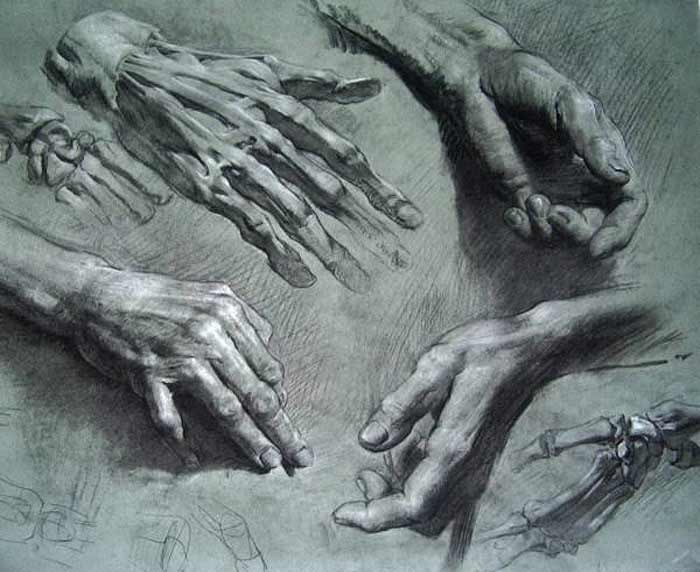
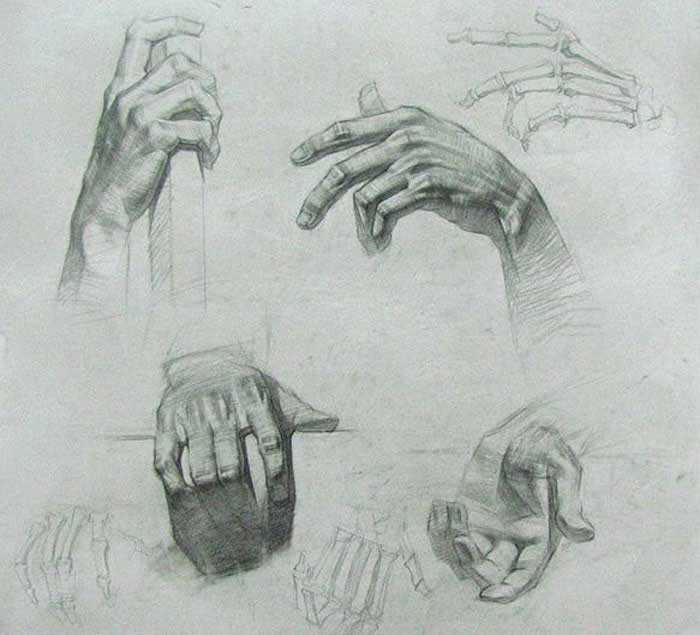
The metacarpal bone is longer than the first phalange of the middle finger, the first phalange is longer than the second one, and, in turn, the second phalange is longer than the third phalange of the finger.
The length of every bone, to the next one, is in the same proportion as the Golden Ratio.
The length of the index and the ring finger usually is the same. However, you may find that one of your fingers is longer than another. It varies from person to person and also depends on your gender.
A male index finger is usually shorter than the ring finger, and a female has a shorter ring finger than index finger.
The little finger is the shortest. It usually ends at the point of the joint between the third and second phalange of the ring finger.
The thumb is different from the fingers. It only has two phalanges. The thumb metacarpal is shorter and thicker than other metacarpal bones. It is also positioned more sideways on the hand, away from the hand palm area.
The heads of the metacarpal bones are known as the knuckles. They are easily detectable when the hand is bent into a fist.
Muscles of the Hand
Now let us examine the muscles of the hand, which will be useful to know when it comes to the topic of how to draw hands.
The muscles of the hand can be divided into intrinsic and extrinsic muscles.
The intrinsic muscles are small and mostly located on the bones of the hand.
The extrinsic muscles originate on the bones of the upper and lower arm.
Intrinsic muscles are divided into three groups – the group that attaches to the thumb, the group that moves the little finger, and the group located between the two groups.
The thumb muscle group consists of four muscles. The purpose of these muscles are to abduct and adduct the thumb as well as to flex it.
The muscle group of the little finger consists of three muscles that contribute to its movement.
The group of intrinsic muscles that lies between the thumb and the little finger includes eight muscles – four muscles located closer to the back of the hand and four muscles on the palm side of the hand (though some experts distinguish only three muscles instead of four on the palmar side).
The four muscles on the backside of the hand help spread the fingers apart while the four muscles on the palm side of the hand bring them closer together and assist in the flexion and extension of the fingers.
You might be surprised, but there are no muscles on the phalanges of the fingers, only tendons. The fleshy parts of fingers are skin, fat tissues, nerves, and the like.
The long tendons of the extensor muscles (of the lower arm) insert into the phalanges of the fingers…
[ The full lesson is avaibale to Anatomy Master Class members ]
To learn more about how to draw hands, enrol in the Anatomy Master Class
Simple Pricing, No Surprises
One-time payment - Only $97 USD
ENROLL NOW



